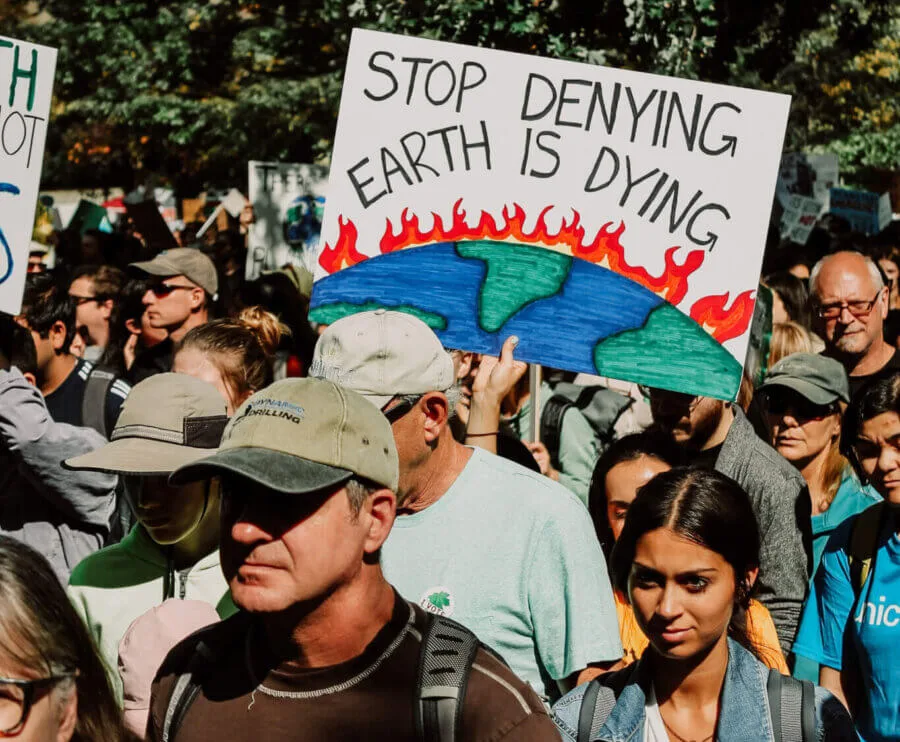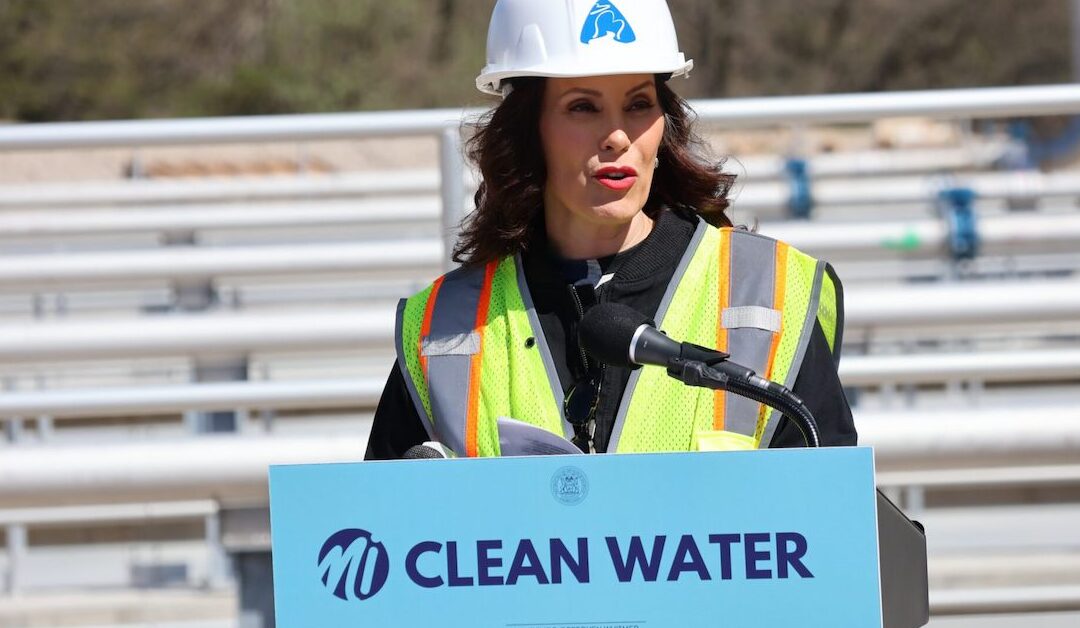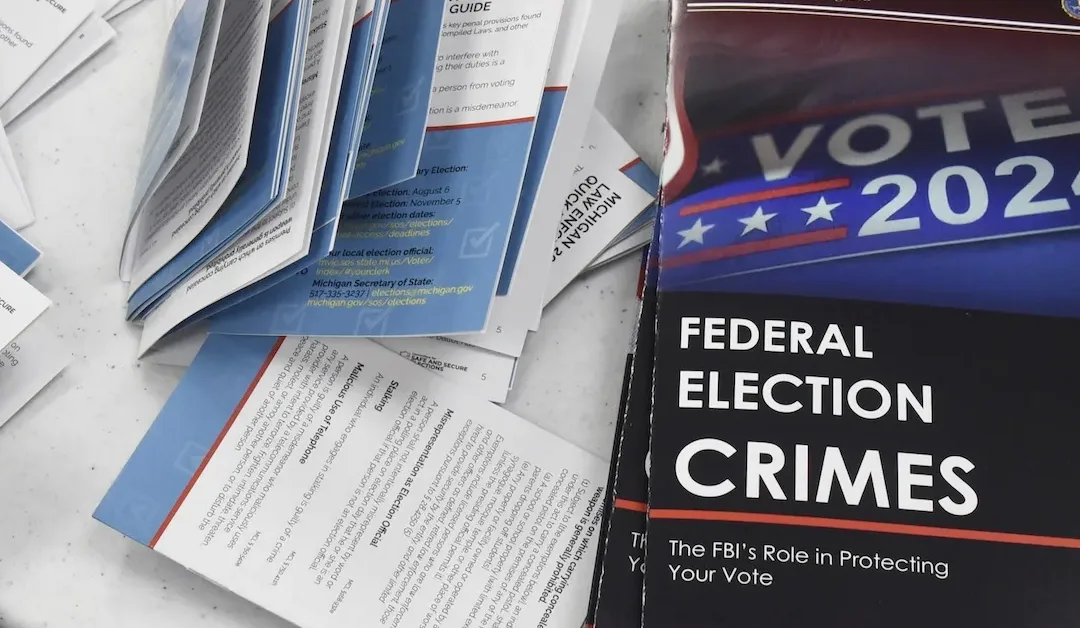
BY TOM PERKINS, PLANET DETROIT
MICHIGAN—During the early 1970s, Michigan enacted a bold set of environmental laws that helped form an unprecedented check on the nation’s industrial heartland. The state’s water and air quality standards went beyond the minimum set by federal law, and it became a leader in managing natural resources and protecting wetlands.
But it wouldn’t last long.
The 1990 election of Gov. John Engler ushered in a new era of deregulation, and, for the next several decades, governors and a largely GOP-controlled Legislature shredded environmental protections while defunding and gutting the state’s regulatory agencies.
The sustained assault hobbled regulators, who are now often unwilling or unable to hold polluters accountable, and the results are in—Flint’s water is poisoned, dangerous air pollution chokes Detroit, and PFAS-contaminated water is killing residents, among other environmental crises.
But now Michigan’s polluters face a new kind of check. A loose coalition of environmental attorneys and activists are increasingly confronting industry with a multi-pronged approach—suing to force companies to follow the law, stepping in during the permitting process and waging campaigns to raise awareness of corporate misdeeds.
They’re de facto regulators, and their strategy is undeniably effective. They’ve forced the closure of the toxic incinerator near Midtown, tripped up Nestle as it attempted to seize the state’s water, pushed utilities like DTE Energy toward clean energy and taken on industrial polluters in and around southwest Detroit.
These groups see themselves as a last line of defense when there isn’t the “political will or appetite to protect the environment,” said Nick Schroek, director of the University of Detroit Mercy’s environmental law clinic.
“Going forward, we’ll likely see more litigation from public interest groups, and that’s partly because of a failure of our government, both state and federal, to evolve and add additional environmental protections that were needed in the face of changing circumstances,” he said.
The rise has been accompanied by a new focus on environmental justice issues in low income communities that bear the brunt of industries’ wrongdoing and political indifference. A new generation of activists from Detroit and other cities has risen, increasingly working with long-established environmental groups (many of whom are new to environmental justice issues) to pressure policymakers.
In recent years, they mounted what is essentially a vigorous public relations campaign that outed Marathon as a local corporate villain. While activists have fought the incinerator since its planning stages, an uptick in public pressure in recent years was critical in forcing its closure, said Nick Leonard, director of the Great Lakes Environmental Law Center.
In the absence of meaningful government oversight, activists are “doing the accountability work for the regulatory system,” said Michelle Martinez, acting executive director of the Michigan Environmental Justice Coalition.
“They’re the scientists, they’re the regulators, they’re the checks and balances of a broken system,” she said. “They’re taking on a David and Goliath fight in almost every single case, whether it’s Marathon Oil, or FCA or the Detroit incinerator – you have fights against multibillion dollar fossil fuel corporations that have the lockdown on the political system.”
But while citizen and public-interest lawsuits provide the public with a valuable weapon in battles with polluters, ultimately the war can only be won with a robust regulatory apparatus. Last-line-of-defense legal cases brought by residents “are not going to get us where we need to be,” on encompassing issues like climate change, Schroeck said.
“We’re sort of nipping around the edges of really, really complicated complex issues … and there needs to be systematic statewide and nationwide efforts, rather than piecemeal litigation,” he added. “To solve issues like chemical contamination across the state, there needs to be a uniform approach.”
‘A Hurdle to Economic Growth’
The deep cuts to the Michigan Department of Environmental Quality in the 20 years that preceded the Flint Water crisis clearly illustrates how defunding regulators can spark environmental disasters that take and destroy lives.
During the early 1990’s, Engler weakened the DEQ (now EGLE) by taking a more direct oversight of the agency and enacting deep budget and staff cuts. Gov. Jennifer Granholm next slashed the budget by nearly $100 million, and a 2010 EPA audit of the DEQ found that $300,000 in cuts to the Drinking Water Program had a “significant impact” on the agency’s ability to monitor water.
Gov. Rick Snyder’s administration pushed an extreme “business-first” philosophy in the DEQ that was summed up by Dan Wyant, the agency’s first director, in a 2010 Crain’s interview: “It’s true we’d like to have more resources, but it’s important that we get the economy back on track first. The DEQ can be a part of that by not being a hurdle to economic growth.”
By the time the Flint water crisis started poisoning residents, the agency’s staff and funding had been cut by around 20% since 2001. The attack on regulators here mirrored that playing out nationally as conservatives began to argue that “environmental protection was something that was somehow at odds with a healthy economy,” Schroeck said. But he noted that history repeatedly shows how this approach leads to environmental disasters, like Flint.
“We saw the crippling of our environmental regulators and it was really impossible for them to do their job,” Schroek said. “The way these laws are supposed to be designed is that we have a government regulator that’s there to protect the public’s health, and to be a counterweight to the very powerful corporate interests.”
Even if the regulatory agencies were enforcing laws during recent decades, a series of Republican attorney generals largely were uninterested in prosecuting polluters, though that’s changed since Dana Nessel’s 2018 election. Soon after taking office, Nessel challenged Enbridge’s dangerous Line 5 plans and later filed a first-of-its-kind suit against PFAS manufacturers.
Meanwhile, the state’s GOP-controlled Legislature in recent years passed “polluter panel” bills that gave industry the power to override new environmental rules. The same group was behind the 2018 lame duck assault on the environment in which it eliminated protections for a vast swath of the state’s wetlands, loosened regulations around toxic fracking waste, approved the controversial Line 5 plans, and more.
In 2017, as Flint residents continued suffering and living without clean water, GOP legislative leadership sent an astonishing letter to Snyder that called for less environmental oversight.
“While we can appreciate the role of the DEQ, we see a pattern of unreasonable overreach when it comes to implementation and enforcement of laws and regulations that is alarming, and it seems that this concern has become more evident over the last couple of years,” it read.
Courts as a Last Resort
With the state failing to protect the environment, public-interest attorneys can turn to the courts.
They typically use one of several tools.They can file a citizen suit in federal court under the Clean Air or Clean Water acts and ask a judge to order polluters to get in compliance with federal law. That’s the approach attorneys have taken with the incinerator, US Steel and other air polluters around Southwest Detroit.
Alternatively, they can sue in Michigan Circuit Court under the Michigan Environmental Protection Act of 1970, and ask a judge to declare a polluter a public nuisance. That approach is less common because plaintiffs can’t recoup legal costs.
Another legal remedy is intervening in DTE Energy and other utilities’ rate cases. A range of activists have successfully pressured regulators to force companies to limit rate increases and close coal plants, among other wins.
Meanwhile, activists are paying closer attention to the permitting process and making sure residents’ voices are heard
One example this year was eastside residents living near the FCA plant who pressured EGLE to require FCA to install pollution controls as the factory expanded. Although EGLE ultimately ignored residents’ demands, Gregg Newsom, a Detroit People’s Platform organizer, highlighted it as an example of the community making regulators hear more than just the industry’s voice.
‘It’s a Life and Death Situation’
Until recent years, Southwest Detroit’s Marathon Oil refinery polluted with near-carte blanche, spewing carcinogens while pumping out hundreds of tons of greenhouse gases annually, plaguing residential neighbors with respiratory disease and other ailments. The coke dust it piled on the Detroit River’s shores blew across the region, dusting neighboring properties with the toxic substance.
But Marathon no longer operates with impunity. A coalition of neighborhood residents-turned-environmental activists have partnered with EJ groups and attorneys to confront the threat and hold Marathon to account.
Over the last four years, they forced Detroit policymakers to take a stand against Marathon and require it to cover loose piles of toxic coke dust piled on the Detroit River’s banks. A year later, state regulators forced the company to install air filtration systems in a nearby school and provide real time air quality data.
Though litigation is ongoing, the wins are a sign of a shifting tide, and Martinez called it “a testament to the power of organizing” that’s increasingly common in communities of color facing an outsize burden of pollution and climate change. During the last 10-15 years, the ranks of activists in these communities has swelled.
“When I came back to Detroit 12 years ago … I could count with my right hand how many environmental justice activists there were in the city. In 2020? There are dozens of climate justice, environmental justice groups, organizations, hundreds, if not thousands, of people who are well informed, skilled and ready to make change.”
Community involvement is critical, said Darryl Eley Jordan, senior organizer with the East Michigan Environmental Action Council (EMEAC), because residents drum up support in their own impacted neighborhoods in a way that outside groups, like lawyers, journalists and the established advocacy groups often can’t.
Jordan highlighted EMEAC’s outreach in neighborhoods around the incinerator, which helped locate residents who suffered from its toxic emissions.
“It takes people in the community to help others understand these issues in a language that they understand – that’s how we build some power and keep politicians in line and responsive to our needs,” Jordan said.
Meanwhile, established environmental groups are increasingly working with residents in impacted communities to determine priorities. Sierra Club attorney Elena Saxonhouse noted that the group now takes a “bottom up” approach in deciding which issues to tackle.
“[We] listen to what the communities we’re working in want and go from there—it’s not all top down. You can’t just tell people ‘you should care about coal plants,'” she said.
Martinez welcomes the new commitment of organizations like the Sierra Club to valuing the voices of the residents living these battles in their daily lives.
“The writing is on the wall, and it has perhaps not hit middle and upper- income white America in the same way,” Martinez said. “The commitment to justice and to a cleaner, healthier environment belongs to those who breathe toxic air every day, because it’s a life and death situation. It’s not just a hobby or a pet interest.”
This coverage was provided by Public News Service.
Politics

Whitmer expands clean water plan while enviros call for more clean energy investments
BY KYLE DAVIDSON, MICHIGAN ADVANCE MICHIGAN—As construction workers at the Delta Township Wastewater recovery facility continued efforts to expand...

Michigan Dems push for action on prescription drug board bills
BY KYLE DAVIDSON, MICHIGAN ADVANCE MICHIGAN—Four Democratic House members are renewing the call for action on prescription drug affordability,...

Local election workers fear threats to their safety as November nears. One group is trying to help.
TRAVERSE CITY—The group gathered inside the conference room, mostly women, fell silent as the audio recording began to play. The male voice, clearly...
Local News

These students are protecting the ‘coral reefs’ of Michigan—and you can too
Vernal pools are a critical part of Michigan’s natural ecosystem—but they’re not protected by state regulations. Here’s how Michiganders are...

The food at Comerica Park puts peanuts & Cracker Jacks to shame
Gone are the days when peanuts and Cracker Jacks were the most exciting food items at baseball games. Baseball stadiums around the country now boast...





